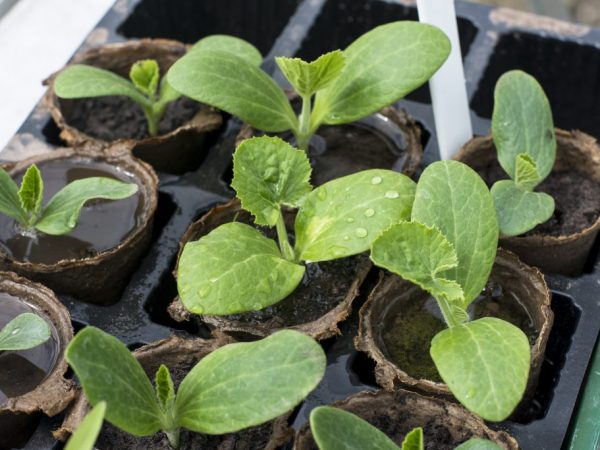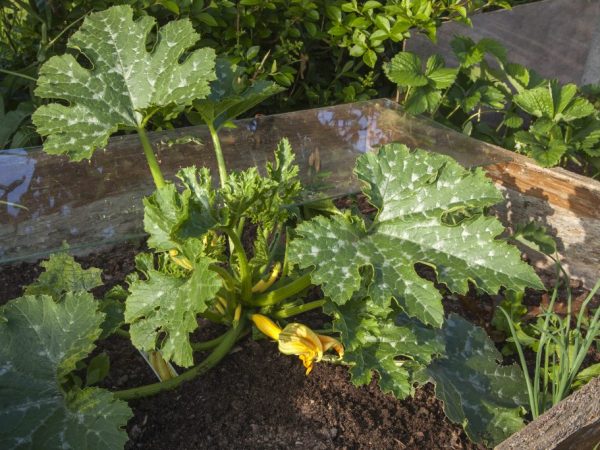How to pinch zucchini correctly
Zucchini require special care when growing. An important step is the formation of bushes. Consider when zucchini is pinched and how to do it correctly.

How to pinch zucchini correctly
Classification by grade
Zucchini varieties can be roughly divided into bush and climbing.
Fruits can be green (zucchini), white, orange, yellow-cream or bicolor with variable stripes and spots on the skin.
The following indicators also differ:
- shape (cylindrical, elongated, round, oval, pear-shaped);
- ripening time (early ripening, mid-ripening and late-ripening);
- the level of cold resistance, productivity and taste.
Features of growing in the open field
For planting and growing in open beds, it is better to pick up seeds of both climbing and bush varieties.
Bush squash (Aeronaut, Anchor, Dinar, Bely, Ronde, etc.) are more compact and do not require a lot of space for growing, because have an erect stem and form a neat bush that does not need to be shaped.
Nevertheless, very often summer residents prefer to plant precisely climbing varieties, because they have very tasty and tender fruits.
The most common types: Waterfall, Aral, Dlinnoplodny, Gribovsky, Karam, Nemchinovsky, etc.
Their long shoots can grow several meters, creeping in different directions along the garden beds, so it is imperative to pinch and form stems, otherwise the lashes will creep over the site.
Having planted fruits of different types and ripening times in your summer cottage, you will be able to harvest several times, providing yourself with various, tasty and healthy fruits for the entire season.
Landing technology
You can start growing zucchini in the open field in two ways - by seeds or through seedlings.
- In the southern regions, you can safely plant seeds in open ground when the soil is warm enough for planting.
- In the northern regions, it is preferable to first grow seedlings, and then plant young plants in open ground.
The preparation of seeds for planting both in the first and in the second case is exactly the same.
Preparation in the procedure
Plot
Zucchini prefer to grow in light, loose and fertile soil.
Therefore, it is necessary in advance (from autumn) to prepare the soil for the spring planting of seeds:
- Dig up the area to a depth of 25-30 cm.
- Harrow the topsoil.
- Apply a mixture of potassium-phosphate fertilizers.

After the appearance of the fifth leaf, pinch the top
In the spring, pre-sowing soil cultivation is also carried out (digging and harrowing to a depth of 15 cm) with the introduction of nitrogen-containing fertilizers into the top layer of the earth.
In case of proximity to groundwater, it is necessary to prepare high beds.
Planting material
Before planting in seedling containers or in open ground, the seeds are pre-soaked in hot water for a day.
It is advisable to add a biostimulator Epin or Zircon to the water (according to the instructions for the preparation), which improve germination and subsequent survival of seeds and seedlings, increase future yield and resistance to adverse factors (frost, drought, diseases, etc.).
Many gardeners leave the seeds in a warm and humid place for several days until they swell and sprout.
Important Tips
The most optimal container for growing seedlings at home is a peat pot: the sprouts are planted in the beds directly with them, which excludes even the slightest damage to the root system of a young zucchini.
- Bushy varieties are planted in beds at a distance of 60-70 cm from each other.
- For climbing places, much more is needed, the interval between plants is about 120-140 cm.
After planting the seeds, young shoots appear already on the 8-10th day.
In order for zucchini to grow and develop well, they need proper and regular care: timely watering, top dressing, pinching of shoots, loosening the soil, removing weeds in the beds, etc.
Basic rules of care
Formation of bushes
So, only climbing species need to be formed. To do this, at the main, and then the subsequent lateral lashes, pinch the top after 5-6 sheets.
This procedure can be carried out as the plants grow, as well as during the formation of buds.
Watering
Excessive moisture reduces the palatability of the fruits and their ability to store for a long time, and if insufficient, the fruits become bitter in taste.
Therefore, water the zucchini generously, but not very often. For this, warm, settled water with a temperature of approximately 20-25 ° C is used.
The frequency of watering should be as follows:
- during the active growth of young plants, as well as during the flowering period - once every 3-4 days. The water consumption is 10 l / m².
- During the formation of ovaries, the formation and subsequent ripening of fruits - once every 6-7 days. At the same time, the water consumption increases and amounts to 20 l / m².
Plants stop watering 10-12 days before harvest.
After each irrigation, it is necessary to loosen the top layer of the soil in order to break up the hard earth crust that has accumulated on the surface, and also simultaneously remove the weeds that have grown in the garden.
Top dressing
Throughout the growing season, zucchini need timely feeding with organic and mineral fertilizers. This is especially true for plants grown outdoors.
Fertilizers are applied in the form of a warm aqueous solution in the morning / evening time of the day under each bush.
- During the growth of young plants - with a mineral solution consisting of superphosphate, ammonium nitrate and potassium sulfate.
- During flowering and fruit setting - with an organic solution of rotted cow dung or chicken droppings.
- During fruiting - with an organic solution based on mullein and wood ash.
It is important to remember that both the lack of fertilizers and their excess are dangerous for zucchini. Therefore, it is necessary to observe the frequency and amount of dressings, as well as the proportions when they are diluted and applied to the ground.

